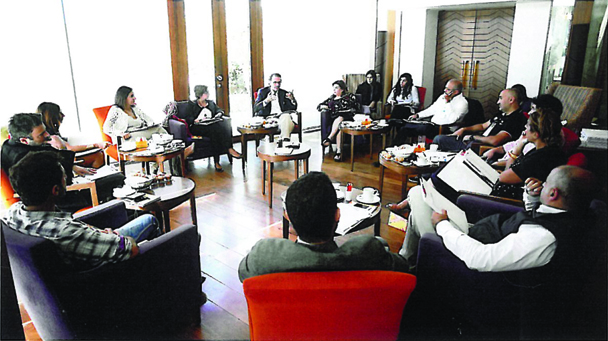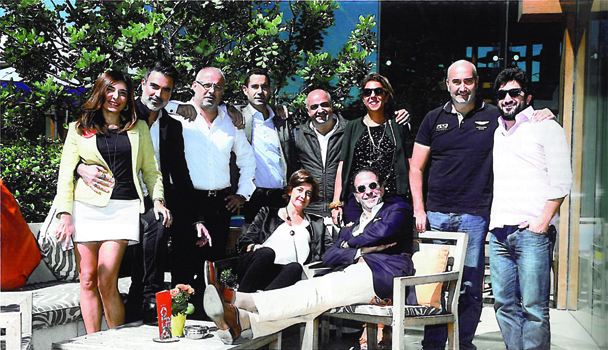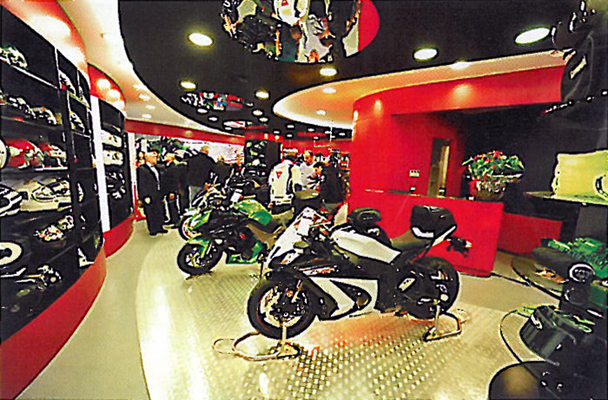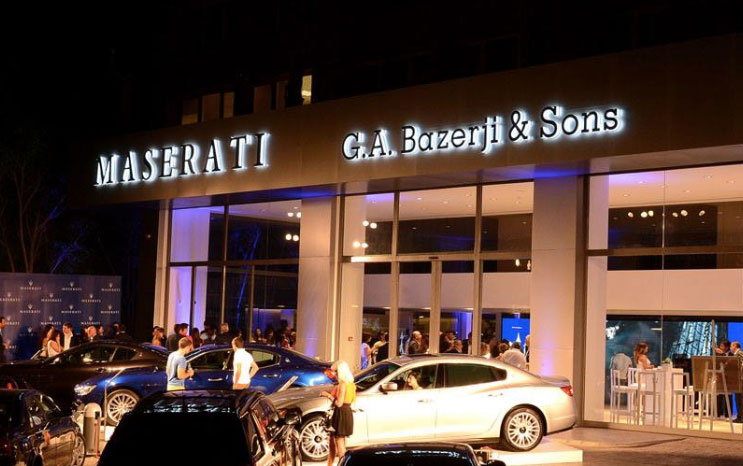Hospitality News – issue no. 91 – page no. 42-44
Designing tasteful experiences
Just how pivotal are architects and designers to the hospitality Industry? And what gets their creative juices flowing? Hospitality News Middle East picks the brains of some of the most brilliant minds in the business
Conserving with some of the most revered names in design and architecture at a recent roundtable at the Cigar Lounge of Le Gray Hotel, Beirut, was kind of like gifting someone hard to please an early Christmas present. It was akin to reading the unpublished manuscript of an invaluable, limited edition book of design wisdom that was authored by 10 industry heavyweights at once.
Does a design or a designer sell a hotel or a restaurant? That was the first question eagerly raised at the gathering. Galal Mahmoud, CEO, GM Architects, breaks the silence with a resounding yes. “It definitely does sell, particularly in the case of a new brand, which emphasizes the design, using it as a communication tool,” he remarks. Nada Debs, designer/owner, East and East sarl, agrees, quoting design wunderkind Philippe Starck to drive her point home. “He’s known for saying that we hear the name of the designer before the name of the hotel and he’s credited with starting this wave.” While a solid design – and the reputed designer/architect to go with it – gives added values to a hospitality concept, this is not the end all and be all, comments Sari El Khazen, owner, Sari El Khazen Architects. “Maybe people would rush to try it out at the beginning, but if it lacks the proper service, good food, right everything… it will fizzle out in a year or two,” he stresses.
Design as a marketing tool?
Sherif Aoun, architect, Mouin Aoun Contracting, reckons this situation begs the question: “Are we solely using design to launch a new concept? I think design has become a marketing tool in the region.” Mahmoud explains why such a move is fraught with risk. “A public building, such as a hotel, is a live experience. It is a story that has to work together – you can’t divide it into chapters. If it’s all about the design, the other elements in the story will be killed.” In that case, an establishment is doomed to failure and/or sinking into oblivion. “So, if the food isn’t that good, the restaurant will very quickly shut down,” says El Khazen.
Design is then one of the foundational forces that will make or break a dining experience or hotel stay. But, in some instances the design may have no bearing on the success and longevity of a concept. “Some age-old restaurants in Paris simply rely on the food and the spirit, essentially the soul,” notes Aoun. “So, the soul becomes the attraction,” remarks El Khazen, citing the example of a Parisian restaurant with stellar food and rustic spirit that’s become celebrated for the atmosphere it has created over the years. Against the backdrop, the “no-design” approach might be the main charmer driving foot traffic, adds Walid Nasrala, creative director, WonderEight.
Trends vs concepts
Nasrala breaks down a major issue he and his peers are afflicted with today when embarking or a commercial design project. “We can’t come up with new ideas so easily anymore, so we ‘repackage’. Design is a way of repackaging an existing product in order to resell it. But the design will fade away if the core of the concept is based on a trend,” he points out. Does that ultimately mean that a good design is directly linked to concept? Nothing is set in stone. “You can have a concept that is trendy. The design can have a concept that is timeless and the trend will be the styling of that concept,” says Nasrala, adding, “So, if you’re designing a hotel building a gallery in the lobby would be changeable, while the foundation of the hotel would have a longer life.”
Any new undertaking entails considering three variables, according to El Khazen these are “the concept, the trend and the brief or client.” “We try to develop a strong concept, but to fully execute that we may have to sacrifice the client’s needs. So, the concept should adapt to the input of the client.”
For Rana Salam, founder, Rana Salam Design, there is but one constant and that’s telling a strong story. “There always has to be a story,” she explains, and to that end, the concept ought to be discussed with the client. “The client is a key factor in how things are done,”, she adds, pointing to how crucial a “brief” can be.
Client-designer relationship
This brings to the fore a very thorny issue: the client’s contribution to a project. “At the start of any project, I ask the client, why did you come to me?” says Salam. “A dialogue with your client can be very enriching, should your client have something to say,” indicates Mahmoud.
Nagi Sfeir, CEO, Nagi Sfeir and Associates (NS&a), outlines the process. “… in essence, if the client is part of the hospitality industry, he/she has something to say.” Sadly, however, the general feeling among the conferees is that the industry is rife with “intruders” while the well-versed hospitality professionals are few and far between.
There is a sharp contrast between a passionate, meticulous client, such as a chef/restaurateur, and a businessman, says Mahmoud. “Chefs are like architects; they take a product and transform it into something very tasty and extraordinary… working closely with someone so involved can challenge and push you, making you creative, and this creates one holistic product.” That’s intrinsically because isn’t commercial, Debs continues.
But dialogue with the more “difficult” clients may not always be as productive. “Sometimes clients come to us on the back of the bad experiences they’ve had with other architects. This is a part of the equation and sometimes we pay the bill,” Sfeir adds, admitting that clients sometimes make “the strangest demands.” So what does an architect or design do under such circumstances?
Making compromises
Sometimes compromises are inescapable. “We have to adapt,” Aoun concedes. “The challenge is in finding that harmony between you and the client because after all they are paying you,” Debs states. Not all architects willingly accommodate clients’ wishes, however. “I think designers should not compromise their original concept, because they will make clients’ lives better,” says Mahmoud.
But not all compromises are “bad” – nor are the mistakes that occur on the back of making such comprises. “Are there no happy mistakes?” Debs wonders. El Khazen believes there are. He compares the process to “the molding of clay,” where several forces and changes hit the project. “Sometimes, through that process, you can discover something new and unexpected,” he points out.
In the meantime, there is always room for leading the client to make compromise. “I believe we can educate clients,” says Salam. “We try to absorb our recommendations. Sometimes it works.
Franchising concepts
Yet designers can only sway their clients so far. They can’t, for instance, talk them out of their “obsession” with franchising. “it used to be about the chef and the food, while the rest would follow,” says Sfeir. “Clients outsource everything now. It’s become a business, which is why many are opening and closing so quickly.”
But on a positive note, some concepts do achieve franchising bliss. “Zaatar w Zeit managed to pull this off nicely,” says Maria Halios, designer/creator, Maria Halios Design (mh?d). The trick is in knowing what to franchise. “Quick service restaurant concepts are by default easy to franchise. But the more elaborate cuisine is more difficult,” El Khazen cautions.
Sweeping changes
The region is more on par today with the design changes that have taken over the world in the past two decades or so. “There is so such more education and awareness today,” says El Khazen. “We have caught up with what’s happening in the rest of the world,” says an optimistic Debs. What has also changed is people’s outlook on design. “Design has become integrated in the program and clients know how to capitalize on it. So when they hire a designer, it is more an investment than just a solution to a concept,” Salam elaborates.
However, not all change is good. George Chidiac, managing architect/founder, George Chidiac Architects, comments: “I think we are currently designing concepts as opposed to restaurants, concepts that we can just recreate… We are losing that design that makes a statement.”
Buy local, go green?
Meanwhile, employing local artists and designers, which lends a certain legitimacy and veracity to the locale where the project is set, is a trend that has been catching on in the region in varying degrees. “We try as much as we can to encourage very talented designers to put their products in our projects,” exclaims Mahmoud. “But this is very difficult in Lebanon, perhaps less so in the UAE,” according to the rather “small” budgets allotted to hospitality projects, the architects portend. Halios explains why local designer pieces are pricey. “We have a very high cost compared to the quality. And the problem is that producing our work in Lebanon has become so expensive,” she reveals.
What of green design, is the region jumping the eco bandwagon? We see it happening less in restaurants and more in hotels, where it can be obligatory,” explains Aoun. Nasrala says some parties have been superficially using green design “as a marketing tool than really doing it consciously.” El Khazen slams this attitude, saying green design should be viewed as neither a luxury nor a trend. “It is a responsibility,” he says, noting, “Green projects become economical after 10 years.” “It is needed a big investment,” Mahmoud says, which is why large-scale projects are perhaps more suited to green candidates. But the seasoned architect highlights eco design as a thorough approach that goes way beyond the ecological materials put to use. “But common sense is not that common,” says El Khazen ending on a lighter note.
For Aoun, the most pressing challenge confronting today’s prolific designers and architects is retaining the essence of a project while pleasing the client. The timeframe given to do projects as for Chidiac a major headache, too constricting. There is no time to experiment and create. Sfeir believes this unfeasible timeframe often results a clash between the designer and client. Nasrala’s main stumbling block is finding the sweet spot between functionality and design, as there is a very fine balance between them. While Malek Salamé of Gicome points to the economic situation, “When the economy is healthy, clients wouldn’t have to cut their budgets so drastically the way they do today.”
More and more designer brands are giving their name to hospitality projects for added appeal and credibility.
DESIGN INSPIRATION
The creatives pick a hospitality design that fascinates them and fuels their imagination
Sherif Aoun: The Madrid’s HH Campomanes hotel, which is full of charm and little details.
Nada Debs: I am drawn to hotels with gardens such as London’s Number Sixteen Hotel.
Sari El Khazen: Rome’s Hotel De Russie has an amazing lobby with the right dose of everything.
Maria Halios: Athens New Hotel, which was designed by the Campana Brothers. The fully green, functional hotel mixes the charm of ancient Athens with modern amenities.
Galal Mahmoud: The architecture of Bali and the Far East in general, particularly the resorts that radiate a feeling of wellbeing and are brilliantly organized although they don’t look it.
Walid Nasrala: I am intrigued by an enchanting private villa in Santorini, owned by a major Greek art collector.
Rana Salam: I like unpretentious restaurants in London such as St. John restaurant. I also love the work of Elsa Crawford.
Nagi Sfeir: Bali’s Waka Padma hotel, now the Sunggu Resort and Spa, which is built in traditional Balinese style and yet mixed with modernity in a very contemporary way.







